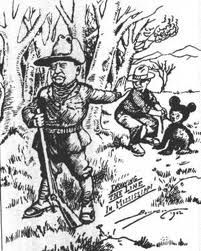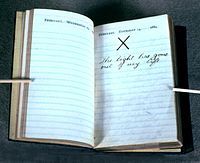This is your morning Open Thread. Pour your favorite beverage and review the past and comment on the future.
Find the past “On This Day in History” here.
February 22 is the 53rd day of the year in the Gregorian calendar. There are 312 days remaining until the end of the year (313 in leap years).
On this day in 1980, the U.S. Olympic hockey team makes “miracle on ice”.
In one of the most dramatic upsets in Olympic history, the underdog U.S. hockey team, made up of college players, defeats the four-time defending gold-medal winning Soviet team at the XIII Olympic Winter Games in Lake Placid, New York. The Soviet squad, previously regarded as the finest in the world, fell to the youthful American team 4-3 before a frenzied crowd of 10,000 spectators.
The United States did not win the gold medal upon defeating the USSR. In 1980 the medal round was a round-robin, not a single elimination format as it is today. Under Olympic rules at the time, the group game with Sweden was counted along with the medal round games versus the Soviet Union and Finland so it was mathematically possible for the United States to finish anywhere from first to fourth.
Needing to win to secure the gold medal, Team USA came back from a 2-1 third period deficit to defeat Finland 4-2. According to Mike Eruzione, coming into the dressing room in the second intermission, Brooks turned to his players, looked at them and said, “If you lose this game, you’ll take it to your graves.” He then paused, took a few steps, turned again, said, “Your fucking graves,” and walked out.
At the time, the players ascended a podium to receive their medals and then lined up on the ice for the playing of the national anthem, as the podium was only meant to accommodate one person. Only the team captains remained on the podium for the duration. After the completion of the anthem, Eruzione motioned for his teammates to join him on the podium. Today, the podiums are large enough to accommodate all of the players.
The victory bolstered many American citizens’ feelings of national pride, which had been severely strained during the turbulent 1970s. The match against the Soviets popularized the “U-S-A! U-S-A!” chant, which has been used by American supporters at many international sports competitions since 1980.

 On this day in 1965,
On this day in 1965, 

 On this day in 1942,
On this day in 1942,  On this day in 1885,
On this day in 1885,  On this day in 2006, the last
On this day in 2006, the last  Worldwide, the last MASH unit was deactivated on October 16, 2006. The
Worldwide, the last MASH unit was deactivated on October 16, 2006. The 

 On this day in 1633, Italian philosopher, astronomer and mathematician
On this day in 1633, Italian philosopher, astronomer and mathematician